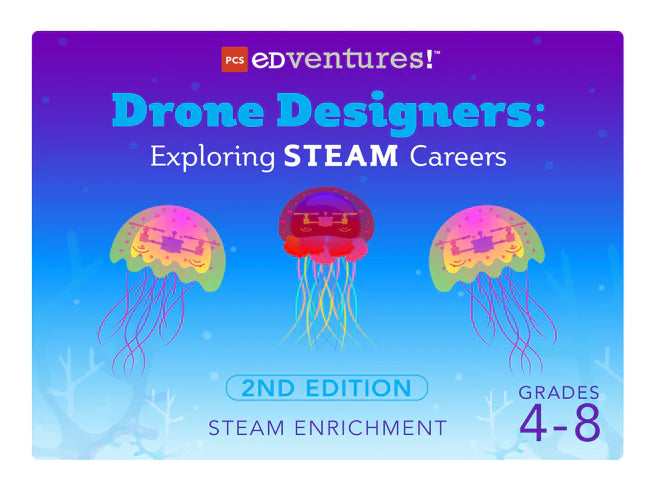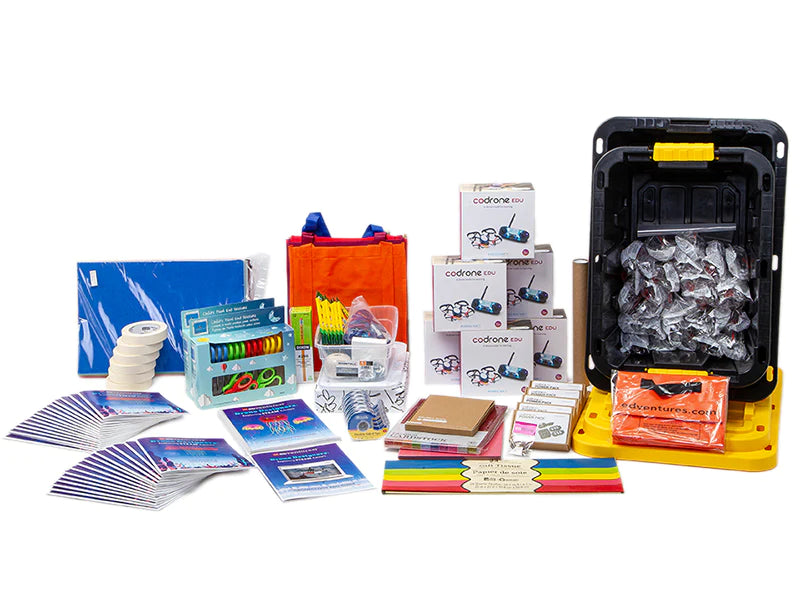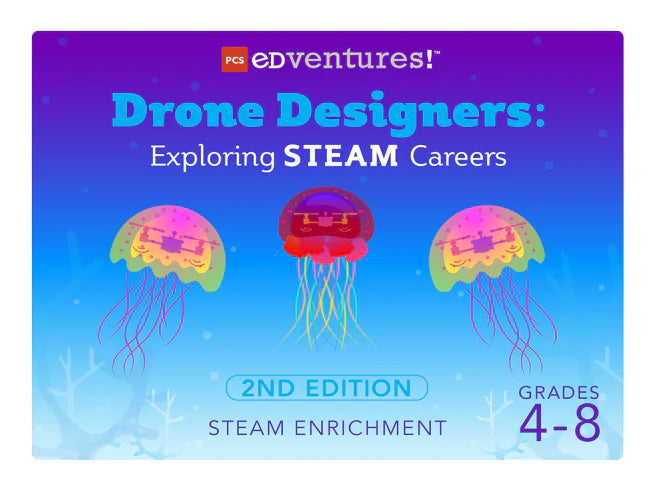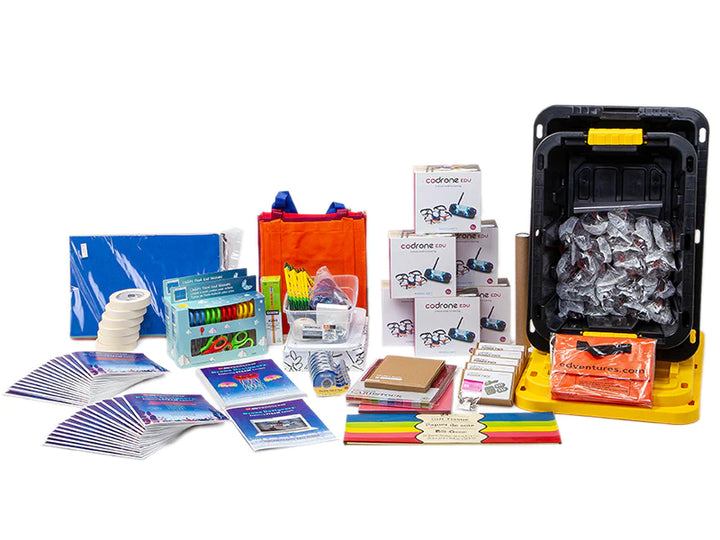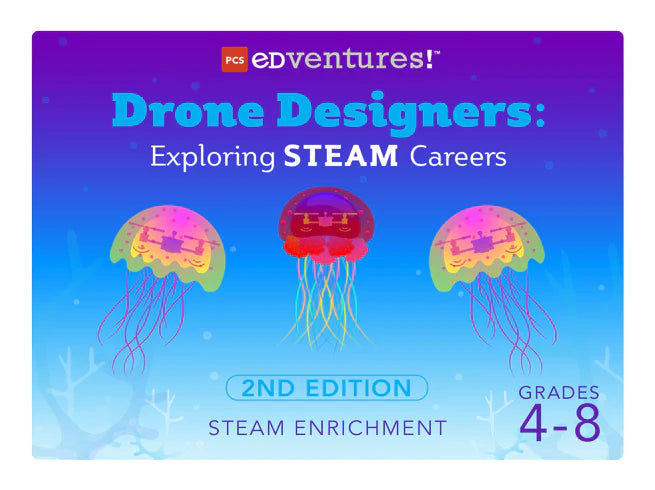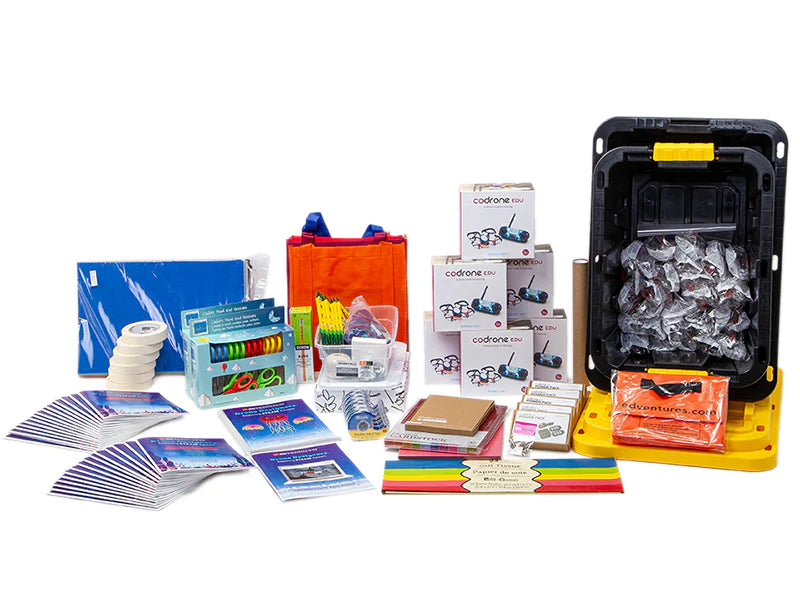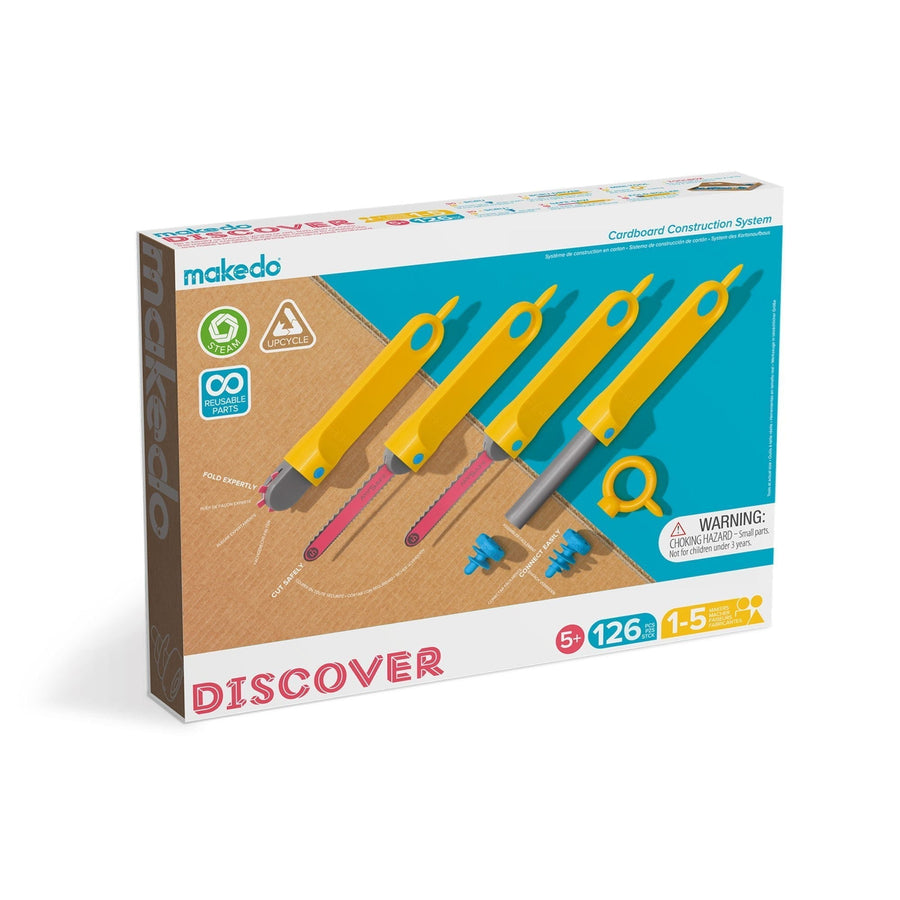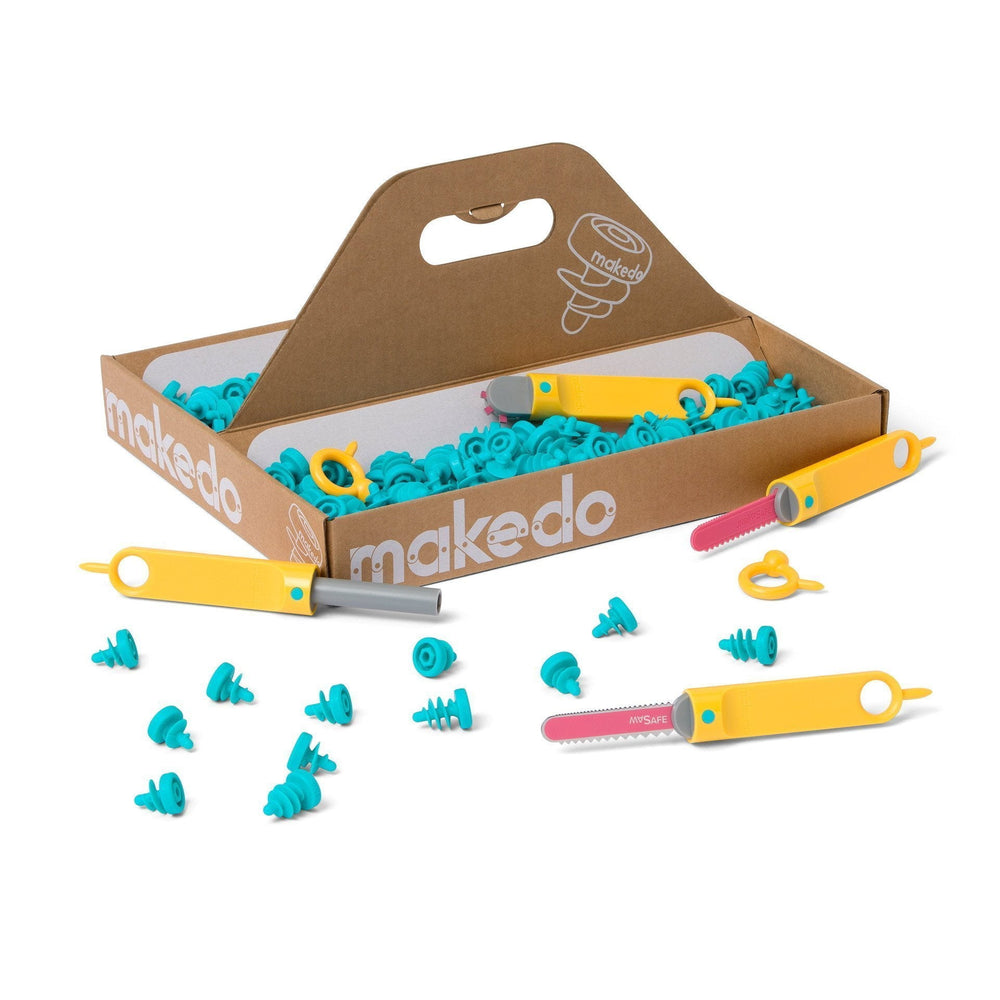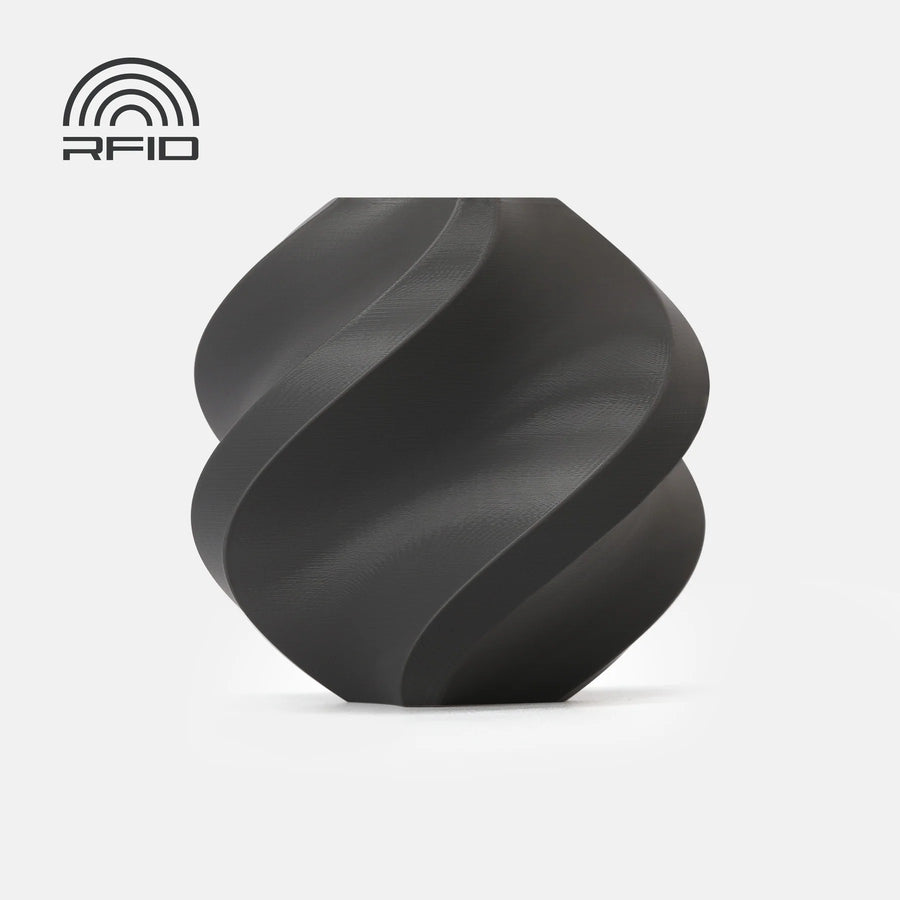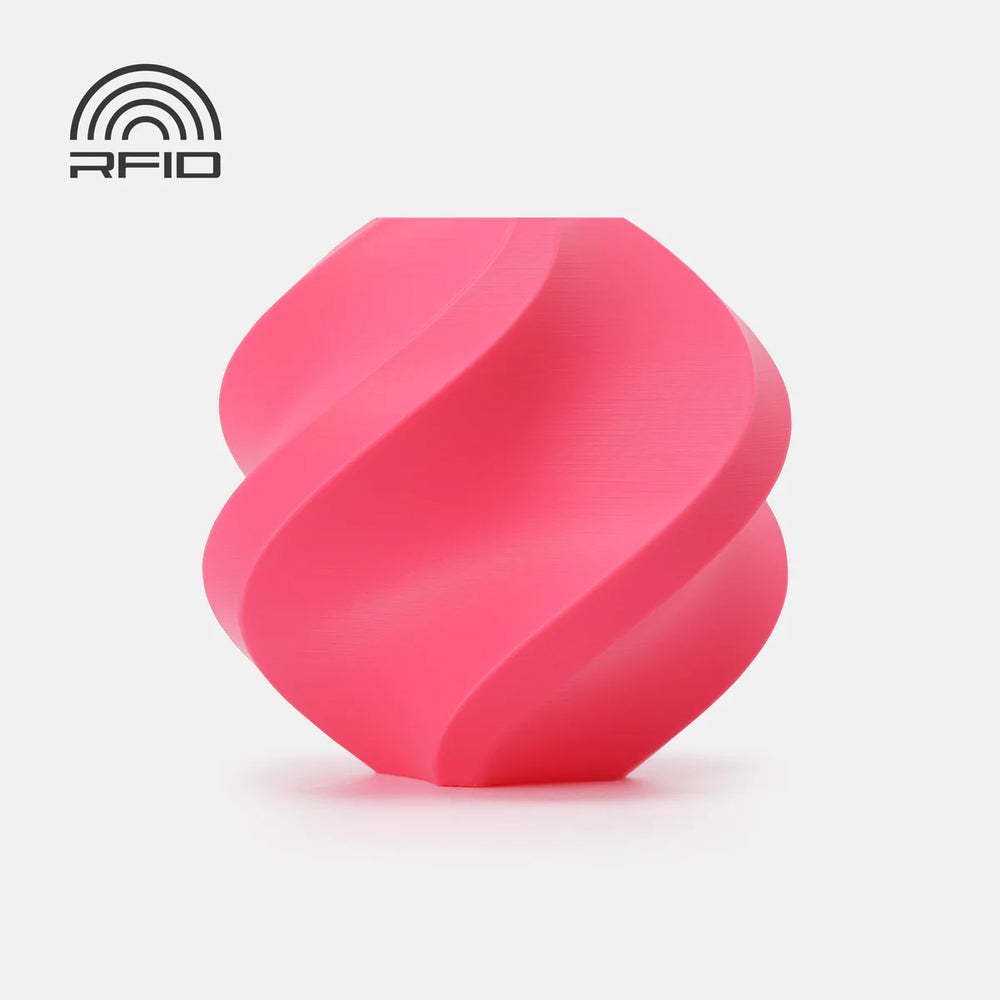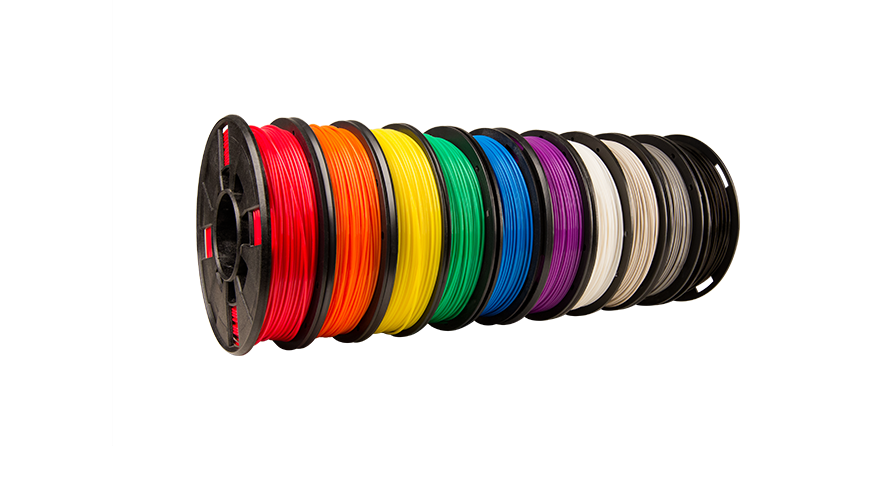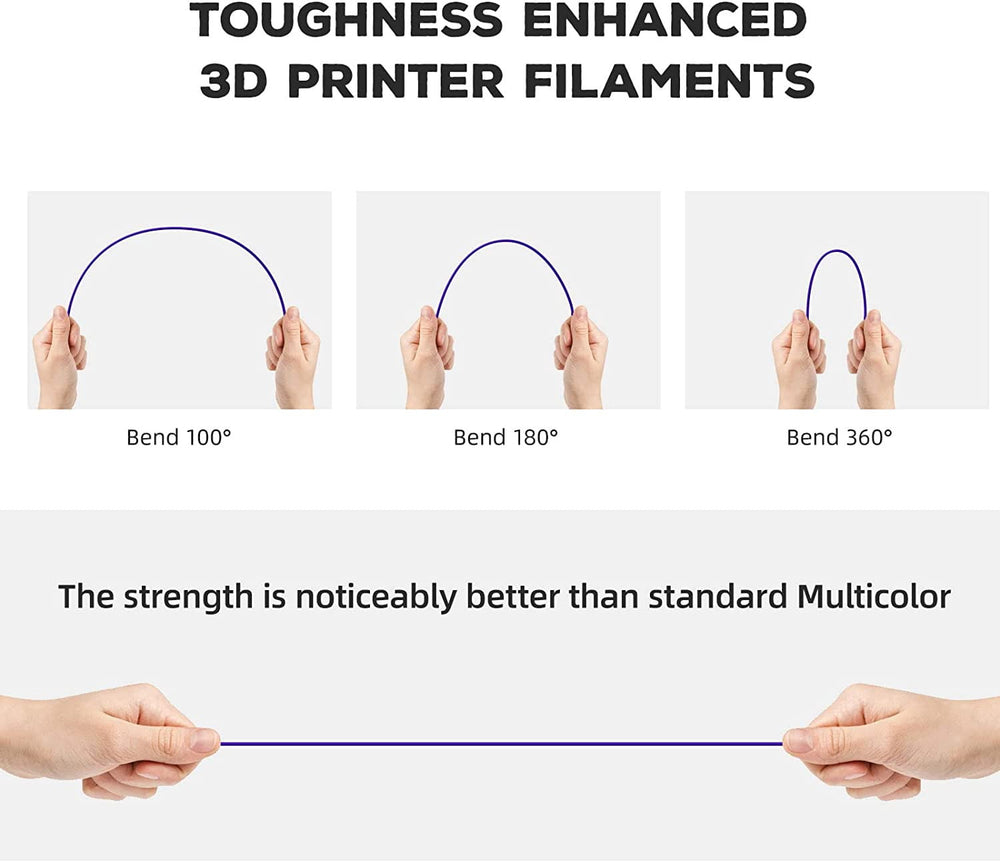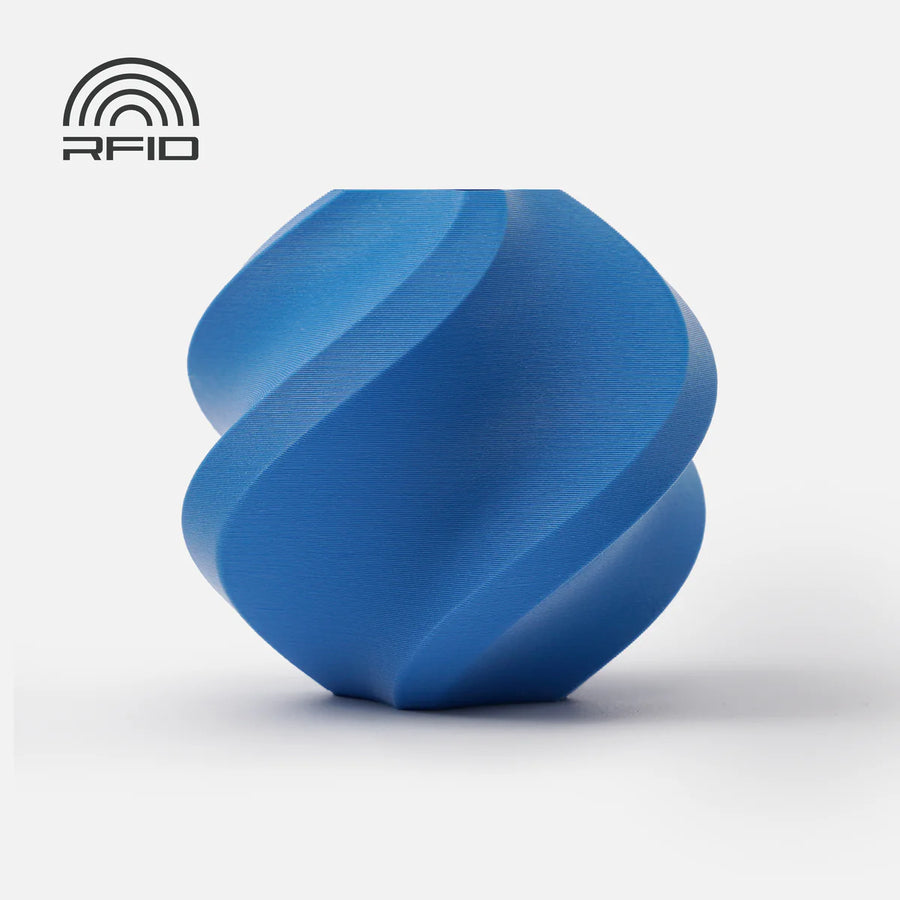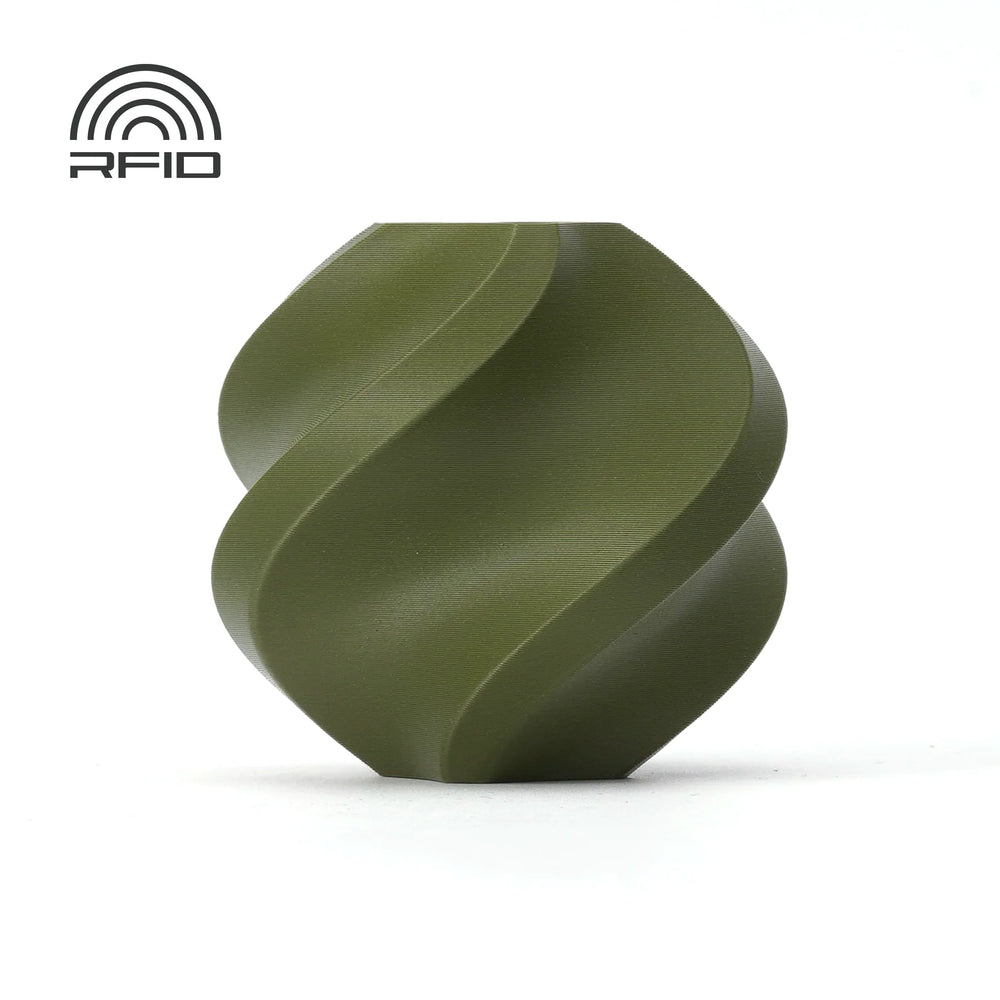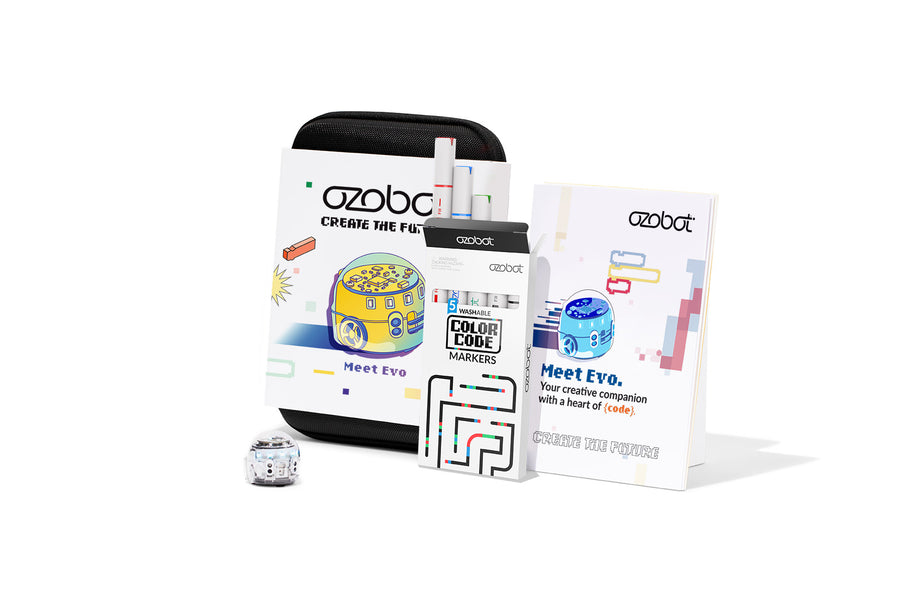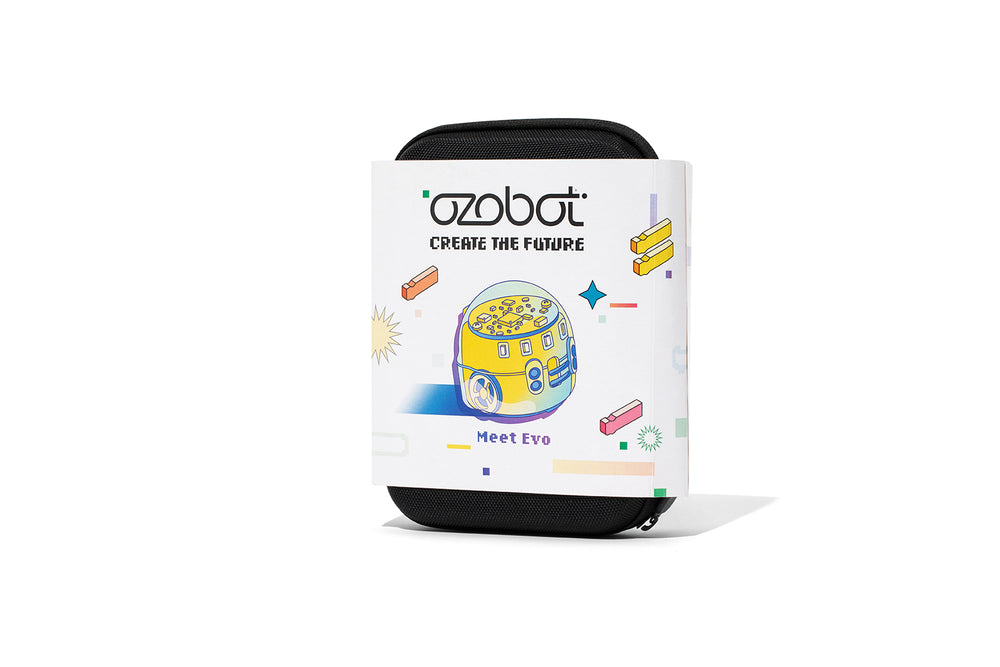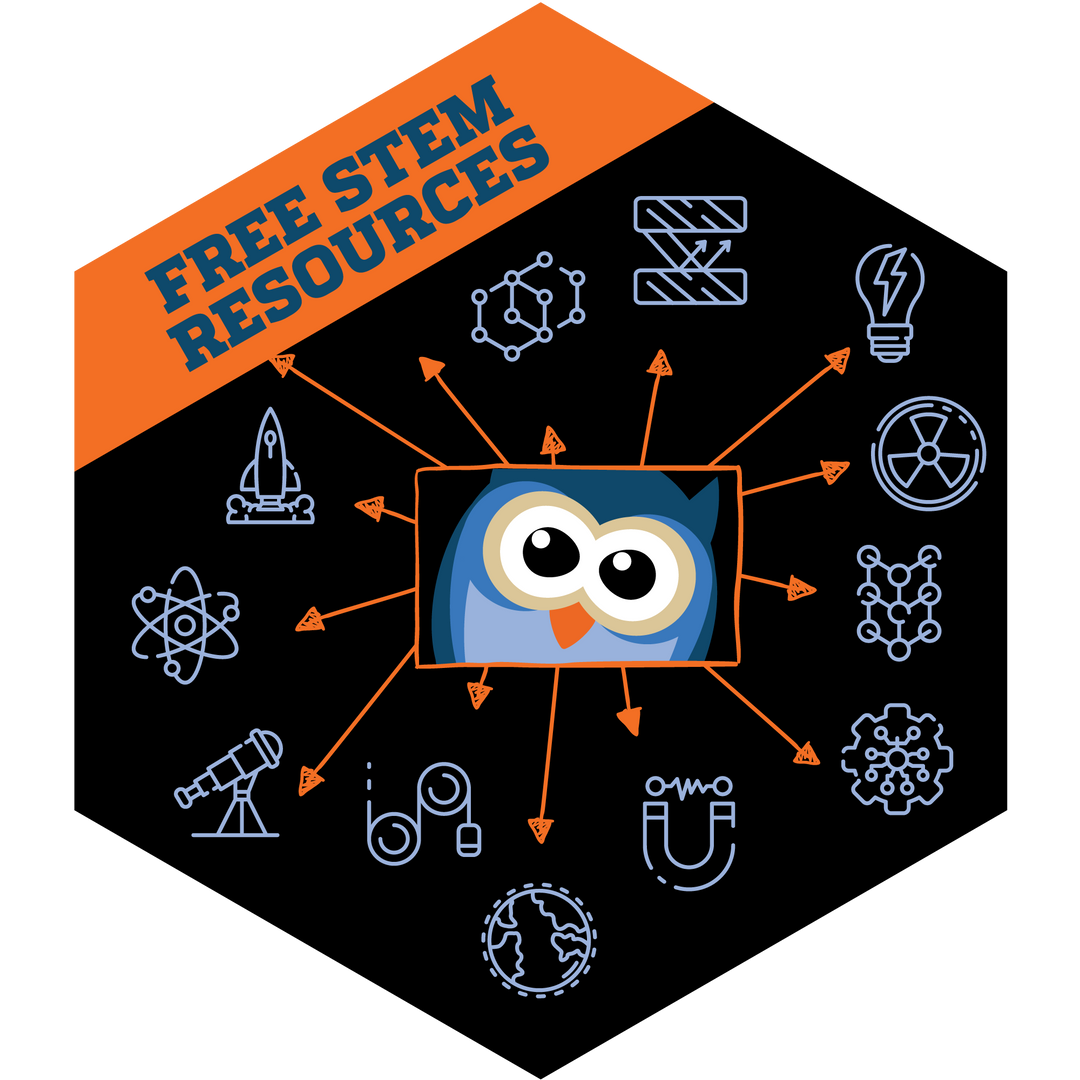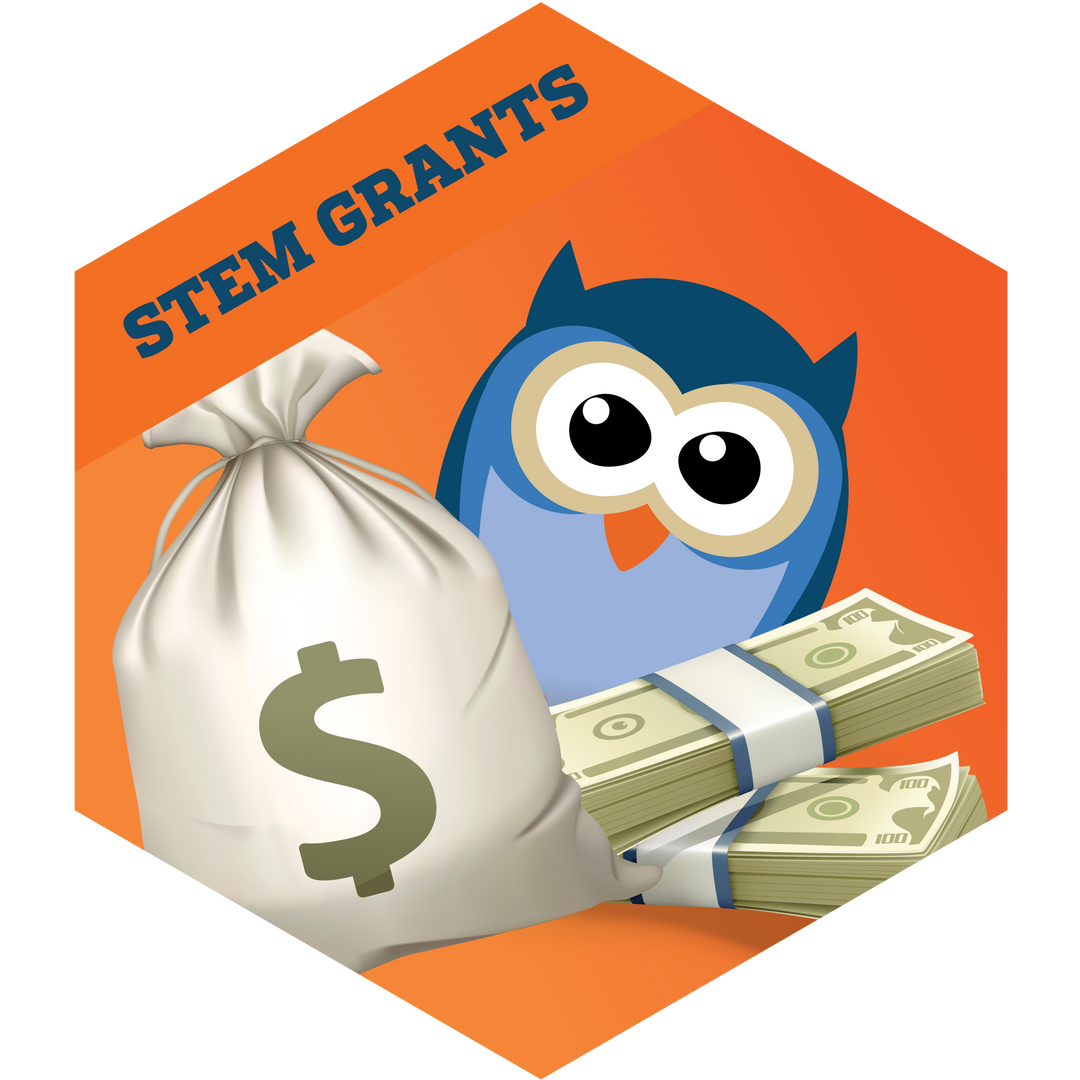Drone Designers: Exploring STEAM Careers 2nd Edition
- Grades: 4-8
- Number of Students: Up to 30
- Number of Lessons: 12
- Contact Hours: 12+
- Additional Resources: Curriculum Sample
Highlights:
Your Performance Will Reach New Heights with the Second Edition of Drone Designers!
Drones are transforming the world of arts and entertainment, performing alongside artists as diverse as Metallica, Drake and Cirque du Soleil. Follow in the footsteps of the world’s groundbreaking drone designers, weaving together the engineering design process and principles of aerodynamics as learners collaborate to costume, choreograph and code tiny aerial robots in creative performances. Use your imagination, problem-solve and explore STEAM careers through the innovative ways drones are being used for good!
Activity Highlights:
- Costume, choreograph and code mini-drones in aerial acrobatic performances.
- Explore drone technology, the iterative design process and the science of aerodynamics through a curriculum aimed at engaging learners in STEAM.
Recommended Settings:
- Summer Camps
- Classrooms
- Before & After-School Programs
Curriculum and Lesson Topics:
Subject Targets:
- Art/STEAM
- English Language Arts
- Technology
Curriculum Topics:
- Art and Technology
- Autonomous Drone Operations
- Algorithms & Programming
- Engineering Design Process
- Real-World Careers
Standards Alignment:
Habits of Mind:
16 thinking habits developed by Art Costa and Bena Kallick to empower students to succeed in a 21st-century learning environment.
- Applying Past Knowledge to New Situations
- Creating, Imagining and Innovating
- Gathering Data through All Senses
- Listening with Understanding and Empathy
- Managing Impulsivity
- Persisting
- Questioning and Posing Problems
- Responding with Wonderment and Awe
- Striving for Accuracy
- Taking Responsible Risks
- Thinking about Thinking
- Thinking and Communicating with Clarity and Precision
- Thinking Flexibly
- Thinking Interdependently
21st Century Skills:
A set of widely-applicable abilities essential for success in the information age.
- Communication and Collaboration
- Creativity and Innovation
- Critical Thinking and Problem Solving
- Flexibility and Adaptability
- Information, Media, and Technology Literacy
- Initiative and Self-Direction
- Leadership and Responsibility
- Social and Cross-Cultural Skills
© 2019 Battelle for Kids. battelleforkids.org. All Rights Reserved. Battelle for Kids was not involved in the production of this product and does not endorse it.
Common Core State Standards for English Language Arts:
- ELA-LITERACY.SL.4.1/CCSS.ELA-LITERACY.SL.5.1/CCSS.ELA-LITERACY.SL.6.1: Engage effectively in a range of collaborative discussions (one-on-one, in groups, and teacher-led) with diverse partners on grade 4-6 topics and texts, building on others’ ideas and expressing their own clearly.
- ELA-LITERACY.SL.4.2/CCSS.ELA-LITERACY.SL.5.2/CCSS.ELA-LITERACY.SL.6.2: Paraphrase portions of a text read aloud or information presented in diverse media and formats, including visually, quantitatively, and orally. / Interpret information presented in diverse media and formats (e.g., visually, quantitatively, orally) and explain how it contributes to a topic, text, or issue under study.
© Copyright 2010. National Governors Association Center for Best Practices and Council of Chief State School Officers. All rights reserved.
Next Generation Science Standards:*
- 3-5-ETS1-1 Engineering Design
- 3-5-ETS1-2 Engineering Design
- 4-PS3-4 Energy Transfer
- MS-ETS1-2 Engineering Design
- MS-ETS1-3 Engineering Design
* Next Generation Science Standards and NGSS is a registered trademark of WestEd. Neither WestEd nor the lead states and partners that developed the Next Generation Science Standards were involved in the production of this product, and do not endorse it.
International Society for Technology in Education:
- ISTE 1d. Students understand the fundamental concepts of technology operations, demonstrate the ability to choose, use and troubleshoot current technologies and are able to transfer their knowledge to explore emerging technologies.
- ISTE 5d. Students understand how automation works and use algorithmic thinking to develop a sequence of steps to create and test automated solutions.
- ISTE 7c. Students contribute constructively to project teams, assuming various roles and responsibilities to work effectively toward a common goal.
ISTE Standards for Students, ©2016, ISTE® (International Society for Technology in Education), iste.org. All rights reserved. ISTE was not involved in the production of this product and does not endorse it.
National Core Arts Standards:
- DA:Cr1.1.4a: Identify ideas for choreography generated from a variety of stimuli (for example, music/sound, text, objects, images, notation, observed dance, experiences)
- DA:Cr1.1.5a: Build content for choreography using several stimuli (for example, music/sound, text, objects, images, notation, observed dance, experiences, literary forms, natural phenomena, current news, social events).
- DA:Pr4.1.6a: Refine partner and ensemble skills in the ability to judge distance and spatial design. Establish diverse pathways, levels, and patterns in space. Maintain focus with partner or group in near and far space.
- VA:Cn10.1.5a: Apply formal and conceptual vocabularies of art and design to view surroundings in new ways through artmaking.
- VA:Cn11.1.6a: Analyze how art reflects changing times, traditions, resources, and cultural uses.
- VA:Cr1.2.5a: Identify and demonstrate diverse methods of artistic investigation to choose an approach for beginning a work of art.
- VA:Cr2.1.5: Experiment and develop skills in multiple art-making techniques and approaches through practice.
- VA:Cr2.1.6: Demonstrate openness in trying new ideas, materials, methods, and approaches in making works of art and design.
- VA:Cr2.2.4a: When making works of art, utilize and care for materials, tools, and equipment in a manner that prevents danger to oneself and others.
- VA:Cr2.3.6a: Design or redesign objects, places, or systems that meet the identified needs of diverse users.
- VA:Cr3.1.5a: Create artist statements using art vocabulary to describe personal choices in artmaking.
- VA:Cr3.1.6a: Reflect on whether personal artwork conveys the intended meaning and revise accordingly.
- VA:Cr3.1.8a: Apply relevant criteria to examine, reflect on, and plan revisions for a work of art or design in progress.
- VA:Pr5.1.6: Individually or collaboratively, develop a visual plan for displaying works of art, analyzing exhibit space, the needs of the viewer, and the layout of the exhibit.
- VA:Pr5.1.8a: Collaboratively prepare and present selected theme-based artwork for display, and formulate exhibition narratives for the viewer.
- VA:Re.7.1.5: Compare one's own interpretation of a work of art with the interpretation of others.
- VA:Re7.2.6: Analyze ways that visual components and cultural associations suggested by images influence ideas, emotions, and actions.
Idaho Computer Science Standards:
- 3-5.AP.06. Construct and test problem solutions using a block-based visual programming language, both independently and collaboratively (e.g. pair programming).
- 3-5.CS.02. Identify, using accurate terminology, simple hardware and software problems and apply strategies for solving these problems (e.g. rebooting the device, checking the power, access to the network, read error messages, discuss problems with peers and adults).
- 6-8.AP.02. Compare different algorithms that may be used to solve the same problem by time and space efficiency.
What's Included:
Drone Designers comes with all of the supplies needed for 30 students to complete 12 one-hour activities:
- Instructor Guide: 1
- Designer’s Notebooks: 31
- Drone Parts Poster: 1
- Flight Team Lanyard Inserts: 1
- Iterative Design Poster: 1
- Curriculum Digital Download: 1
- Storage Tubs: 2
- #2 Pencils (12 pack): 3
- Ball of String: 1
- Colored Pencils (12 pack): 6
- Construction Paper (50 pack): 1
- Craft Foam (24 pack): 1
- Digital Scale: 1
- Glitter Cardstock (40 pack): 1
- LiPo Battery Multi-Charger: 6
- LiPo Safe Storage Bag: 1
- Metal Washers: 80
- Mini Quadcopters: 6
- Mini Quadcopter Motors (4 pack): 1
- Pencil Sharpeners: 6
- Plastic Container: 1
- Production Team Lanyards: 30
- Rolls of Double-Sided Tape: 6
- Rolls of Masking Tape: 6
- Safety Glasses: 30
- Scissors (Child): 12
- Scissors (Adult): 1
- Team Tote Bags: 6
- Tissue Paper (24 pack): 1
- White Cardstock (250 pack): 1
Additional Information and Resources:
Technology Requirements/Specifications:
Six Internet-connected laptops or Chromebooks (one per drone) to run the Blockly web app and access music.
(Note: CoDrone EDU is not compatible with Android or iOS operating systems.)
Note: Due to production time, this item typically ships 2-3 weeks after receipt of the order. During peak season, April-June, lead time is around 6 weeks. Please plan and order accordingly.


